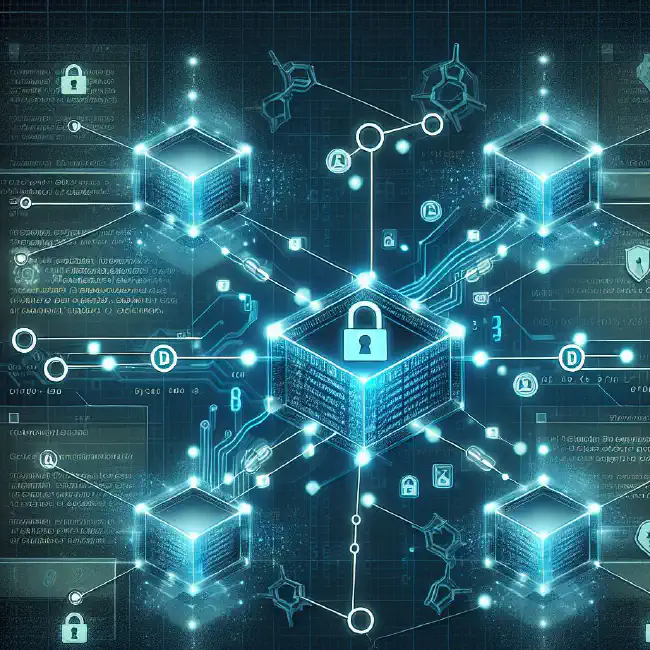Understanding Tamper-Proof Ledgers: The Backbone of Blockchain Security
Understanding Tamper-Proof Ledgers: The Backbone of Blockchain Security
In the digital age, the integrity and security of data are paramount. Tamper-proof ledgers have emerged as a revolutionary tool, ensuring that recorded information remains immutable and trustworthy. At the core of this innovation lies blockchain technology, which remains an unparalleled solution despite misconceptions associated with cryptocurrencies like Bitcoin.
What Are Tamper-Proof Ledgers?
Tamper-proof ledgers are systems designed to record data in a way that prevents unauthorized modifications. These ledgers ensure data integrity through mechanisms such as cryptographic hashing, consensus protocols, and time-stamping. Once a record is added, it becomes a permanent and verifiable part of the ledger, accessible for audits and verification.
Blockchain: The Standard-Bearer for Tamper-Proof Systems
Blockchain is perhaps the most well-known example of a tamper-proof ledger. Unlike popular misconceptions, blockchain does not always rely on miners for its operation. Miners, who validate transactions in public blockchains like Bitcoin, are primarily associated with cryptocurrencies. However, blockchain can operate without miners, as demonstrated by the BoardMeeting.app project. This platform uses a closed, private blockchain network to securely register anonymous votes of board members, ensuring transparency and data immutability without the need for cryptocurrency mining. By leveraging this private network, BoardMeeting.app highlights how blockchain’s decentralized and distributed database can provide robust solutions for applications requiring trust and security.
One notable example of blockchain’s application is BoardMeeting.app, a platform designed to register anonymous votes of board members securely. By leveraging blockchain technology, this project ensures that votes are recorded immutably, guaranteeing transparency while maintaining voter anonymity. This combination of security and confidentiality highlights the potential of blockchain in tamper-proof systems. Importantly, blockchain’s association with cryptocurrencies like Bitcoin should not overshadow its broader applications. Blockchain and Bitcoin are distinct concepts: while Bitcoin is a cryptocurrency that uses blockchain, blockchain itself is a versatile technology applicable far beyond financial transactions. Blockchain’s flexibility allows it to be implemented in various forms, including closed, private blockchains that do not involve miners, making it suitable for non-cryptocurrency use cases like BoardMeeting.app.
Alternative Tamper-Proof Systems: The Case of Mobile Voting
While blockchain has proven its efficacy, some projects have opted to explore alternatives. Mobile Voting is a compelling example of a tamper-proof system that deliberately avoids blockchain. Designed to facilitate secure and trustworthy digital voting, Mobile Voting employs rigorous cryptographic measures and verifiable data trails to ensure the integrity of the voting process. However, moving away from blockchain has significantly increased the project’s complexity and cost. Ironically, the principles it relies on—cryptographic security, data immutability, and distributed verification—are the very foundations of blockchain technology. By excluding blockchain, Mobile Voting illustrates the challenges and inefficiencies of replicating blockchain’s capabilities through alternative means. This decision underscores the importance of reevaluating misconceptions about blockchain, as the technology itself is not inherently tied to cryptocurrencies like Bitcoin.
The Role of Perception in Technology Adoption
The contrasting approaches of BoardMeeting.app and Mobile Voting highlight the impact of public perception on technology adoption. While blockchain provides undeniable security advantages, its association with Bitcoin and other cryptocurrencies has led some projects to explore alternative methods. This often results in increased complexity and costs, as seen with Mobile Voting. Correcting misconceptions and educating stakeholders about blockchain’s broader applications can unlock its full potential.
The Future of Tamper-Proof Ledgers
As digital interactions become more prevalent, the demand for tamper-proof systems will only grow. Blockchain remains the most efficient and secure foundation for these systems, offering unparalleled data integrity and trust. By overcoming the stigma associated with cryptocurrencies, blockchain can drive innovation across industries, from voting systems to financial transactions.
By understanding the principles behind tamper-proof ledgers and exploring their diverse implementations, we can better appreciate their potential to enhance security and integrity in the digital era. Projects like Mobile Voting and BoardMeeting.app exemplify how different approaches can achieve the same goal of tamper-proof data integrity, but also demonstrate why blockchain remains the most effective solution.



